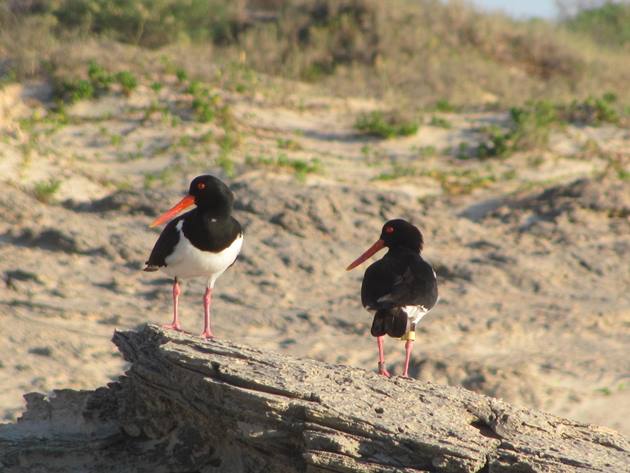
Over the years that we have been observing Pied Oystercatchers along the coast near Broome we have noticed that it is the male bird that always appears to construct the nest site. One of our male Pied Oystercatchers has been marked with an engraved leg flag “A1” and was one of the first pairs to lay eggs this season. Sadly the two chicks did not survive very long at all and the pair of Pied Oystercatchers were soon getting ready to lay more eggs. We have observed them mating this week and also constructing a nest site. The pairs of Pied Oystercatchers that we observe often use the exact same nest site or another that they have used other years within very close proximity to the other nest site for further clutches of eggs. We had noticed new footprints to the previous nest site, so wondered if that would be the nest chosen again.
Pied Oystercatcher footprints leading to the last nest site
As we walked back down towards the beach the pair of Pied Oystercatchers flew back towards us and stopped at a new location. We sat and observed the male Pied Oystercatcher “A1” as he prepared a new nest site. The female Pied Oystercatcher stood close by as the work proceeded and “A1” removed small rocks & used his breast to push out the ideal shape. At no point did the female Pied Oystercatcher aid in the construction of the nest, but she would check it for shape and size. It obviously was not quite right and “A1” continued to try and please her for some time. Both of the Pied Oystercatchers sit on the eggs, but male Pied Oystercatchers appear to have the responsibility of constructing a nest. It is not unusual to find a group of trial nest scrapes in a breeding territory and then the female lays the eggs in the nest that she prefers.
“A1” Preparing another nest site
We left the pair of Pied Oystercatchers to their nest construction and noted that they had also returned to the nest site close by used in other years. The nest site they had used for the first clutch of eggs and the one they ultimately chose are the nest sites with the best view of Cable Beach and the surrounding dunes. The egg that was laid this week is now being incubated and so it appears that there will only be the one egg in this second clutch. We can only hope that by laying only one egg and having only one chick to raise that they may have more luck second time round.
Pied Oystercatcher nest site
Unfortunately every single egg that was laid at the northern end of Cable Beach has already been lost and so the pairs of Pied Oystercatchers are getting ready to lay more eggs over the coming weeks. Each one of those nests was slightly different and those with the large pieces of debris around them were exactly as we found them. We do not add debris to protect the nests and the main threat to the nests still appears to be feral cats.
The migratory shorebirds are now returning to Broome with the arrival back of Common Sandpipers and Wood Sandpipers. It is always interesting to observe how little flying the local non-migratory shorebirds actually do. You are much more likely to observe Pied Oystercatchers and Red-capped Plovers walking than flying!


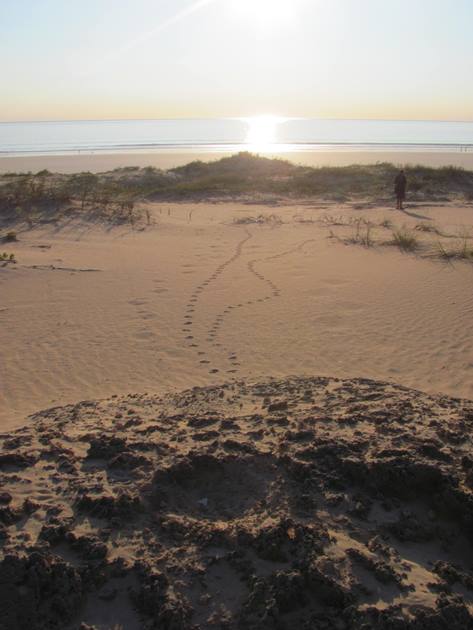
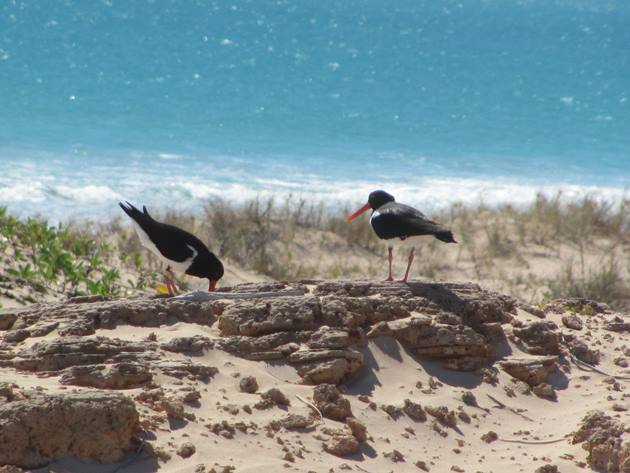
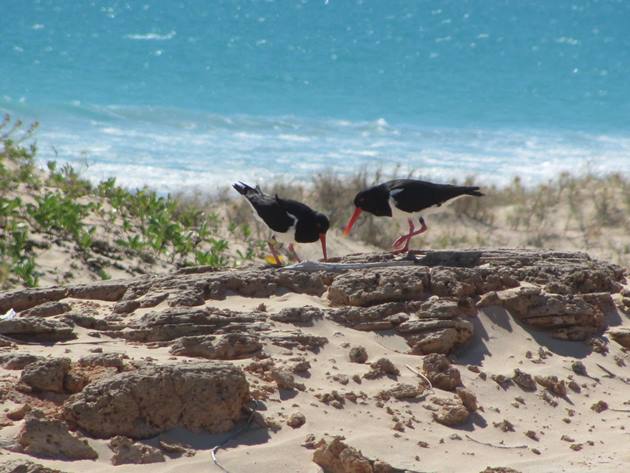
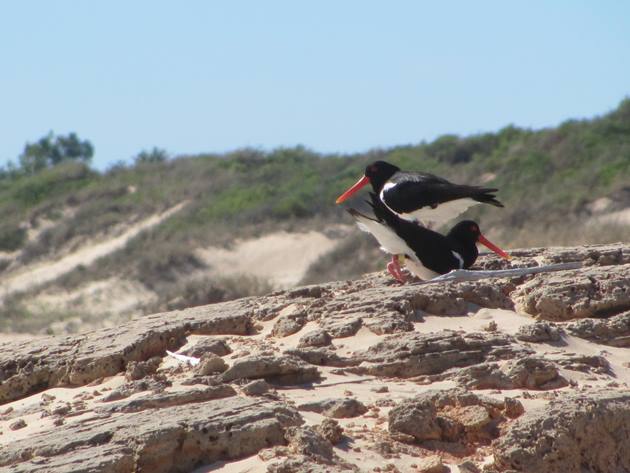
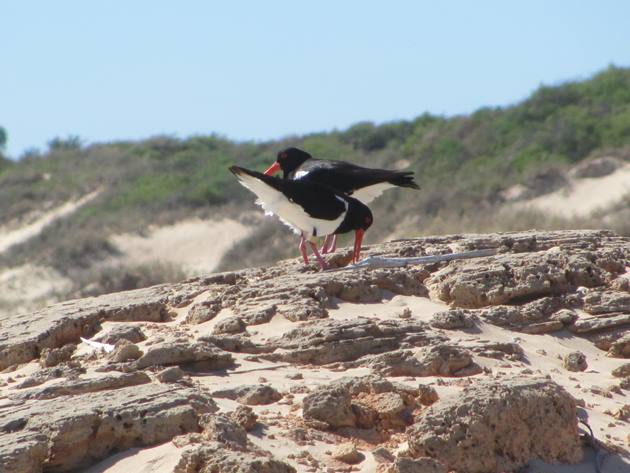
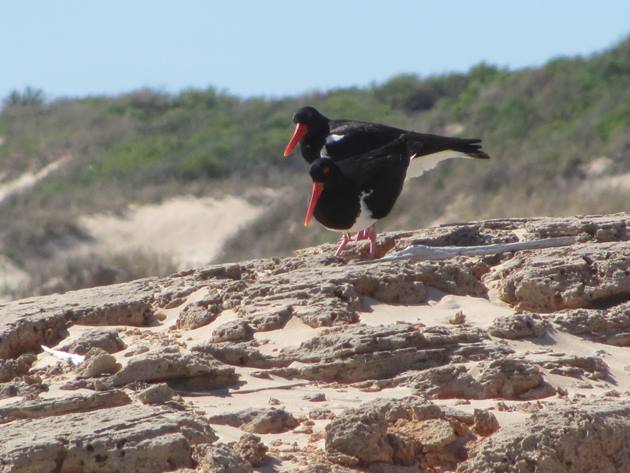
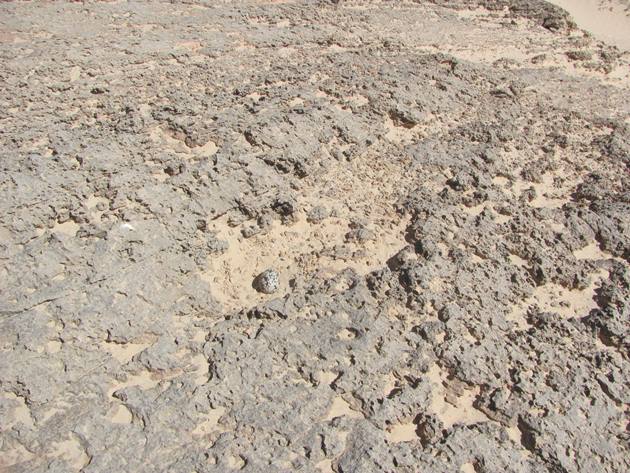











Fascinating observations! I hope that poor egg hatches and the chick survives!
We are forever hopeful!